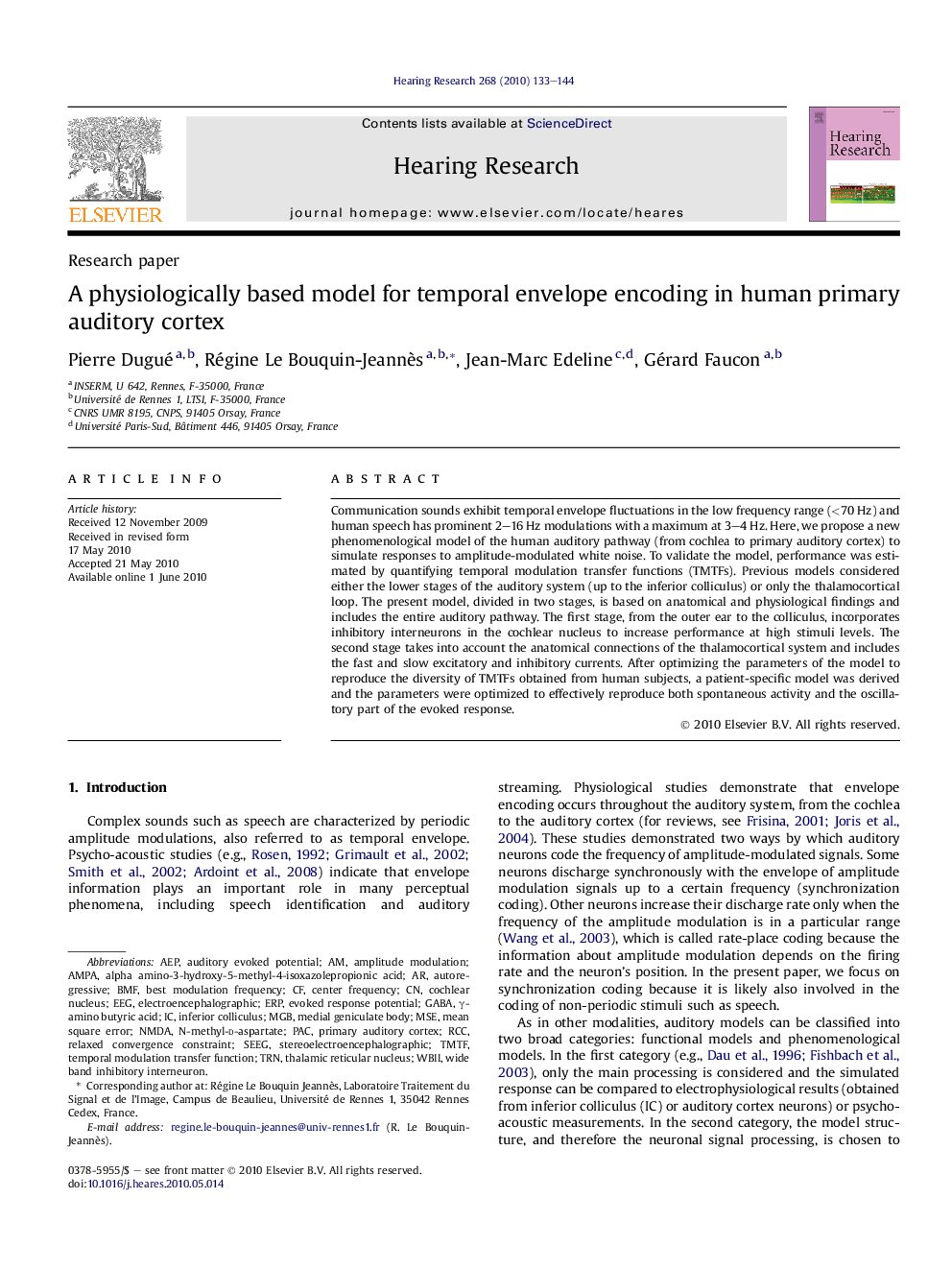| Article ID | Journal | Published Year | Pages | File Type |
|---|---|---|---|---|
| 4355611 | Hearing Research | 2010 | 12 Pages |
Communication sounds exhibit temporal envelope fluctuations in the low frequency range (<70 Hz) and human speech has prominent 2–16 Hz modulations with a maximum at 3–4 Hz. Here, we propose a new phenomenological model of the human auditory pathway (from cochlea to primary auditory cortex) to simulate responses to amplitude-modulated white noise. To validate the model, performance was estimated by quantifying temporal modulation transfer functions (TMTFs). Previous models considered either the lower stages of the auditory system (up to the inferior colliculus) or only the thalamocortical loop. The present model, divided in two stages, is based on anatomical and physiological findings and includes the entire auditory pathway. The first stage, from the outer ear to the colliculus, incorporates inhibitory interneurons in the cochlear nucleus to increase performance at high stimuli levels. The second stage takes into account the anatomical connections of the thalamocortical system and includes the fast and slow excitatory and inhibitory currents. After optimizing the parameters of the model to reproduce the diversity of TMTFs obtained from human subjects, a patient-specific model was derived and the parameters were optimized to effectively reproduce both spontaneous activity and the oscillatory part of the evoked response.
